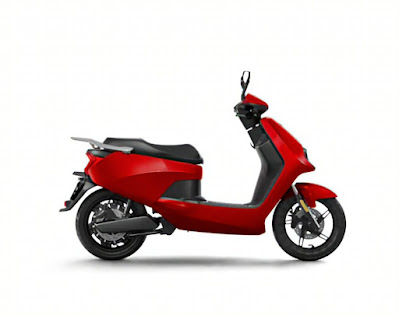The Rising Significance of Europe E-bike
E-bike Sales Growth in Recent Years
Electric bicycle (e-bike) sales in Europe have witnessed tremendous growth in
recent years. From 2010 to 2020, the annual sales of e-bikes increased by more
than 200% across major European markets. In 2020 alone, e-bike sales grew by
over 40% compared to the previous year despite the pandemic. Countries like
Germany, Italy, France, Netherlands and Belgium witnessed the highest growth
rates.
The growing preference among Europeans for eco-friendly transport options that
help reduce congestion and emissions have contributed significantly to the rise
of Europe
E-bike. They provide an affordable, convenient, andemission-free
alternative to car journeys for short commutes within cities. Their electric
assist makes climbing slopes and hills easier, expanding the range and scope of
bicycle usage. Manufacturers are also introducing innovative features like
integrated batteries and smartphone app connectivity that enhance user
experience.
Factors Driving Increased E-bike
Adoption
The rapid growth of the European e-bike market can be attributed to several key
factors:
Financial Incentives and Tax Benefits: Many European governments offer direct
subsidies and tax incentives for purchasing e-bikes. In countries like Germany,
Netherlands, France and Belgium, buyers can avail up to 25-30% subsidy on
e-bike prices. Some even provide tax-free commuting allowances for using
e-bikes for work travel.
Improved Infrastructure: Cities across Europe have invested heavily in
expanding dedicated bicycle lanes and multi-use paths. This has encouraged
cyclists by making journeys safer and more accessible. The improved
infrastructure also attracts new users, especially for short-distance
commuting.
Health and Wellness Benefits: Regular cycling helps maintain overall physical
and mental health. E-bikes make cycling a more viable option for many by
reducing effort levels. This attracts users across demographics who still reap
significant fitness benefits compared to personal vehicles.
Rising Environmental Consciousness: Young consumers, especially in Western and
Northern Europe, are increasingly mindful about reducing their carbon
footprint. E-bikes are viewed as a sustainable mobility solution that doesn't
compromise on performance or utility.
Ageing Population: Europe has one of the oldest populations globally. E-bikes
enable the elderly to continue cycling independently for longer. They address
issues like limited stamina or joint/knee problems faced by older riders.
Changes in Urban Planning: More employers provide changing rooms, cycling
parking and other facilities that make bicycle commuting practical. Many city
centers also restrict car entry at certain times to encourage 'active travel'.
How are E-bikes Classified in Europe?
E-bikes are classified into three main categories across European markets based
on the level of electric assist they provide:
- Class 1 e-bikes provide pedal-assist only up to 25 kmph without throttles.
Pedaling must be detected for motor engagement.
- Class 2 e-bikes have speeds limited to 25 kmph but come with a hand throttle
for motor operation without pedaling.
- Class 3 e-bikes provide pedal-assist up to 45 kmph. They are less popular
owing to higher speeds requiring insurance and licensing in some countries.
Most popular commuter e-bike models cap speeds at 25 kmph to qualify as cycles
and avoid licensing requirements. Models catering to older demographics
generally provide lower maximum speeds and pedal assists focused on easing exertion
rather than replacing it entirely.
Key European E-bike Markets
Despite pandemic-related disruptions, the e-bike markets of leading European
countries grew remarkably in recent years based on volume sales data:
- Germany - Over 2 million e-bikes were sold in 2020, accounting for more than
20% share of total bicycle sales. It has emerged as the largest e-bike market
globally.
- Netherlands - E-bikes represent a third of all bicycle sales in the country
which has the highest per capita bicycle ownership. Amsterdam residents made
over 60% of trips by bicycle in 2021.
- France - The e-bike market grew 47% in 2020 with sales crossing the 500,000
mark for the first time. Cities like Paris provide strong incentives for
switching to cycles.
- Italy - Bicycle commuting is rising in popularity with e-bike sales
increasing 30-35% annually. The government aims to implement comprehensive
national cycling plans this decade.
- Belgium - It has the highest e-bike ownership rate in Europe. Cities like
Brussels and Ghent have extensive cycling infrastructure that e-bikes access
easily.
- Denmark and Sweden - While smaller markets, bicycle usage is deeply ingrained
in the culture and e-bikes supplements existing use cases effectively.
Get More Insights on Europe E-Bikes




Comments
Post a Comment